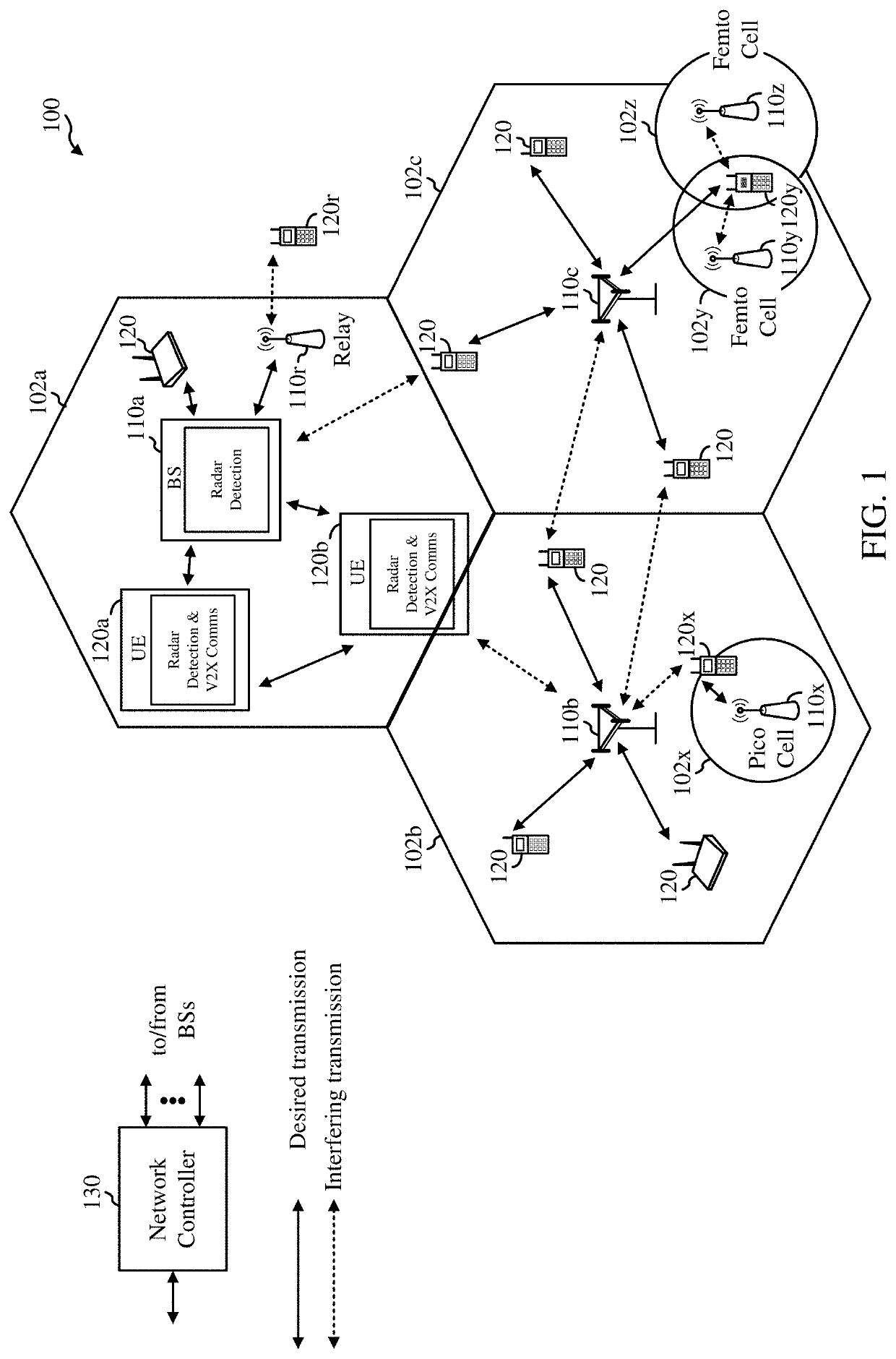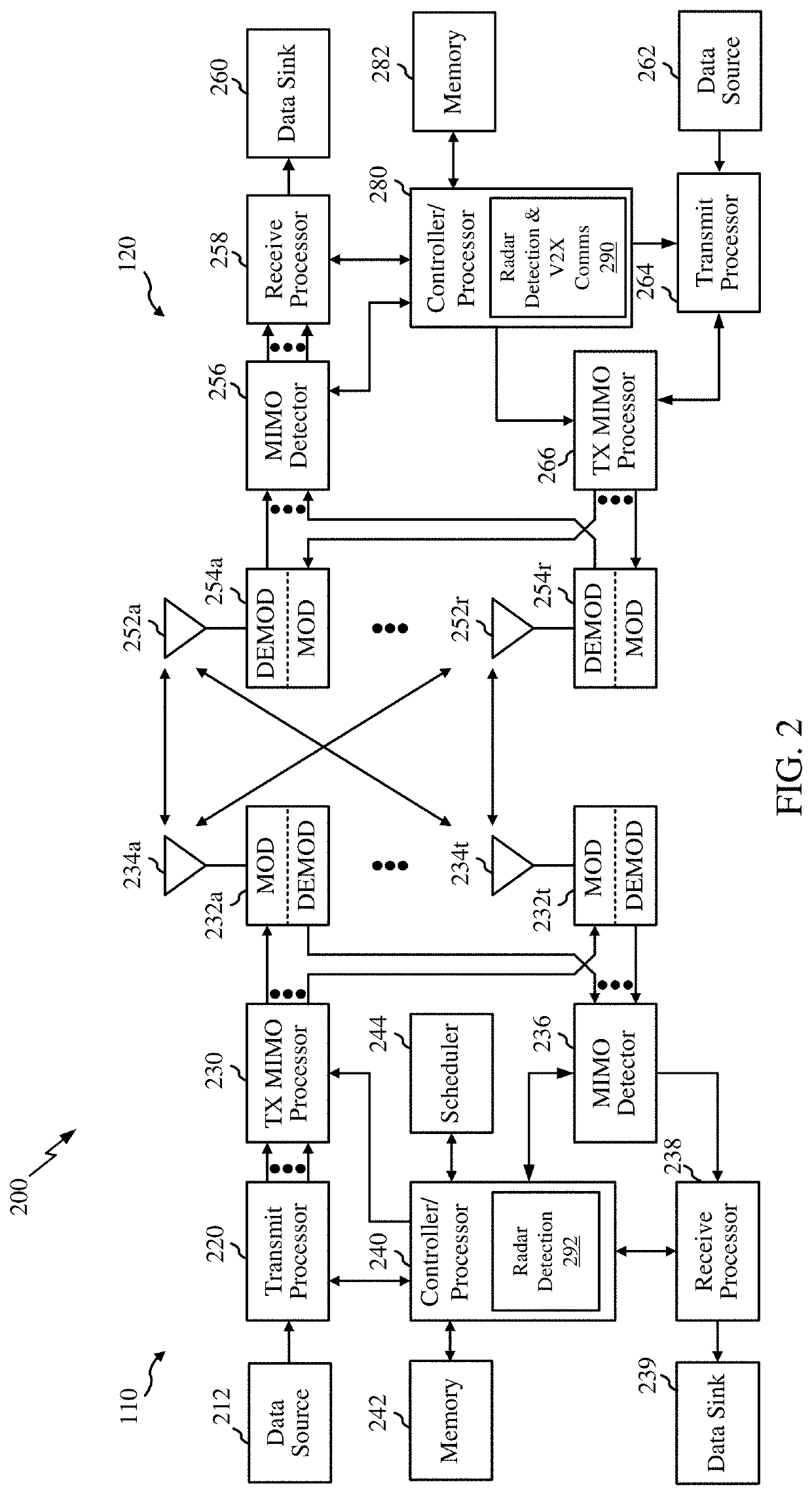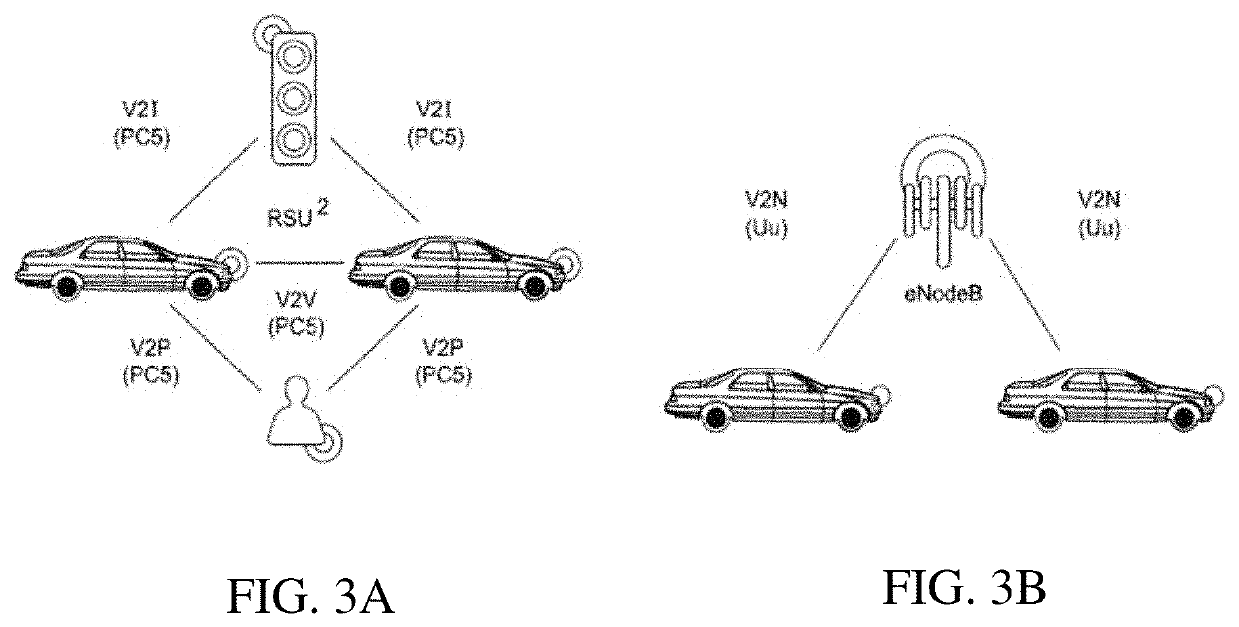Multi-radar coexistence using slow rate interference identification and suppression
a multi-radar and slow-rate technology, applied in the field of wireless communication, can solve problems such as larger problems such as interference, and achieve the effect of improving communication between access points and stations
- Summary
- Abstract
- Description
- Claims
- Application Information
AI Technical Summary
Benefits of technology
Problems solved by technology
Method used
Image
Examples
example radar
-Based Target Detection
[0051]Radio detection and ranging (radar) is a complementary technology to vehicle-to-everything (V2X) communication that enhances road safety and the driving experience. Radar uses electromagnetic waveforms to detect objects and determine information such as its relative speed and location. Vehicles can use radar to enhance several technologies. For example radar can enable advanced navigation techniques such as accident avoidance and self-driving operations, etc. In accordance with certain aspects of the disclosures, radar detection systems can interface with, or be incorporated into, V2X communication systems.
[0052]V2X communications include, among others, vehicle-to-vehicle (V2V) communications. In some circumstances, two or more vehicles (e.g., UE 120a and UE 120b) may communicate with each other using sidelink signals. Real-world applications of such sidelink communications may include public safety, proximity services, UE-to-network relaying, Internet o...
example slow
Rate Interference Identification and Suppression
[0075]One approach to address overlapping radar waveforms is to randomize waveform parameters at a relatively fast rate (e.g., each chirp) for interference suppression. In this approach, for example, the waveform may be varied across chirps for interference randomization (suppression) or shaping (for orthogonalization). Additionally, phase coded FMCW could be employed for further randomization (suppression). In some cases, the radar transmission (waveform) parameters (e.g., slope, offset, and / or phase-code) may be selected by a vehicle (radar detection system) from a codebook of possible patterns.
[0076]One potential drawback with fast-scale (chirp-to-chirp) interference suppression techniques is that receiver (Rx) side processing changes may be needed in order for the processor to coherently combine the desired signals as the parameters are varied with each chirp. In some cases, transmitter (Tx) side changes may also be needed, particu...
PUM
 Login to View More
Login to View More Abstract
Description
Claims
Application Information
 Login to View More
Login to View More - R&D
- Intellectual Property
- Life Sciences
- Materials
- Tech Scout
- Unparalleled Data Quality
- Higher Quality Content
- 60% Fewer Hallucinations
Browse by: Latest US Patents, China's latest patents, Technical Efficacy Thesaurus, Application Domain, Technology Topic, Popular Technical Reports.
© 2025 PatSnap. All rights reserved.Legal|Privacy policy|Modern Slavery Act Transparency Statement|Sitemap|About US| Contact US: help@patsnap.com



